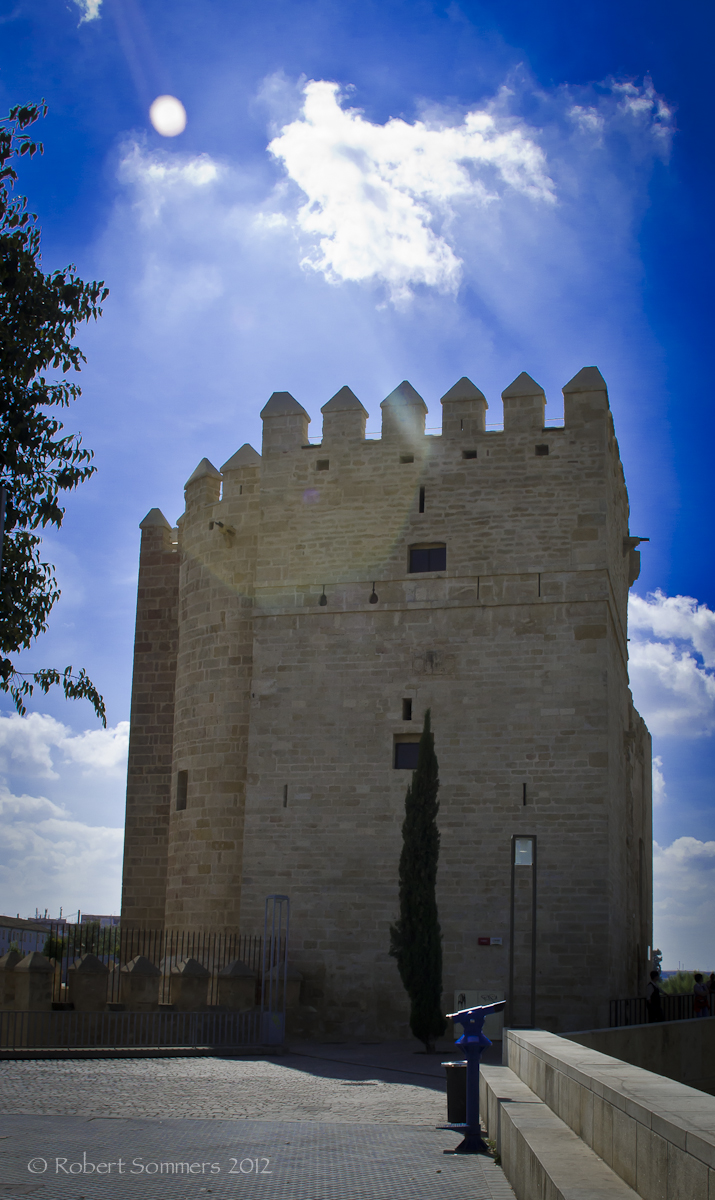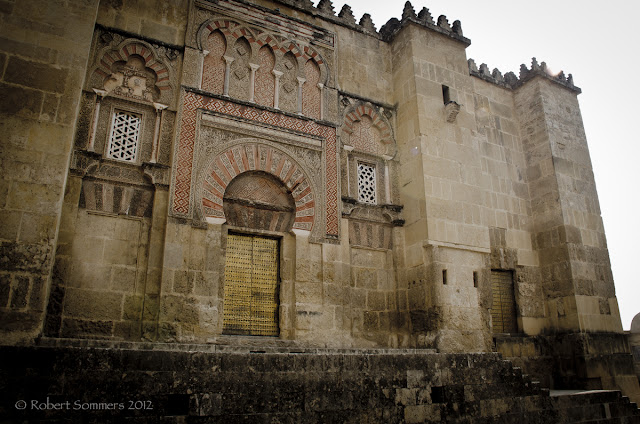The Grand Mosque is one of the most amazing buildings I have ever entered, maybe the most wondrous, or so I thought until two days later when I entered the Alcazar in Sevilla. Abd ar Rachman I bought the land for the mosque from christians (it had been the site of the Cathedral of St. Vincent) and commenced construction in the late eighth century. It was completed by his son Hisham in 796. Kid did a nice job.
Outside is a lovely courtyard lined with orange trees and a bath for ritual bathing. This building is so large inside, many football fields big. The mosque has eleven aisles. The architectural pillars were built to resemble the precious date palm trees that the moors had left in North Africa and the Sahara. The immense building has 1293 marble columns, 280 chandeliers and over 1400 lamps.
The building has a kiblah or prayer wall and a sumptuous mihrab or curved ceremonial niche that provides the faithful with the direction of the kaaba in Mecca. It is my understanding that this mihrab is different and points to the south for some reason instead of the southeast.
During the reconquest, the christians decided it was time to redecorate, building a cathedral inside in 1523 and destroying large parts of its grandeur. Charles V was none too pleased when he found out what his minions had done, reportedly telling them that "You have built what you or others could build anywhere in the world but you have destroyed something that was unique in the world."
One of the problems with the christian renovation is that to my eye, they were applying a topical aplique to a structure that was built with much regard to composed form and space. Much of the later filigree looks forced and out of balance to me.
The building is truly a marvel.
We left the mosque and traveled into the juderia. We made our way to the old synagogue.
Cordoba has these beautiful roman columns still extant in the middle of town that date from the first century.
I found that the moorish architecture resonated with me much more powerfully than the papist, which was also absolutely splendid. The grand arab mosques that I visited on the trip were truly gardens of earthly delights.
I read it said that the moorish artistic paradigm celebrated the infinity of the present moment while the christian saw life as a purgatory state to the next stop, whether heaven or hell. The moors held nothing back, some of the tile work rivals the most psychedelic work ever accomplished.
Although I was not able to visit this trip, approximately 7 km northwest of Cordoba lies the ruined palace of Medina Azahara, the palace of Abd ar Rahman III. It was supposedly the apogee of the craft but was destined to exist for less than a century. It contained pools of mercury and rooms constructed of crystals so that they would be bathed in constant rainbows. I don't believe that it needs to be pointed out that that is our kind of palace. I am looking forward to visiting on a future trip.
Cordoba is the sort of place that a photographer could shoot for a thousand lifetimes.
We stopped back at Salinas for more ham and melon and one last shot of gazpacho. And then made our way towards Sevilla. But that, my friends, is another story and will have to wait for another day.
Please note that if you click on any photo they will all come up in a full size slideshow and be a bit nicer to view.
























2 comments:
Thanks for the note that you're back. The photographs of Spain are beautiful. Leslie is quite the two-fisted drinker.
That is my favorite Cordobesian gazpacho! I brought the recipe home, if anyone wants it!! MMMmmmmm so good, I could have it every day!
Post a Comment